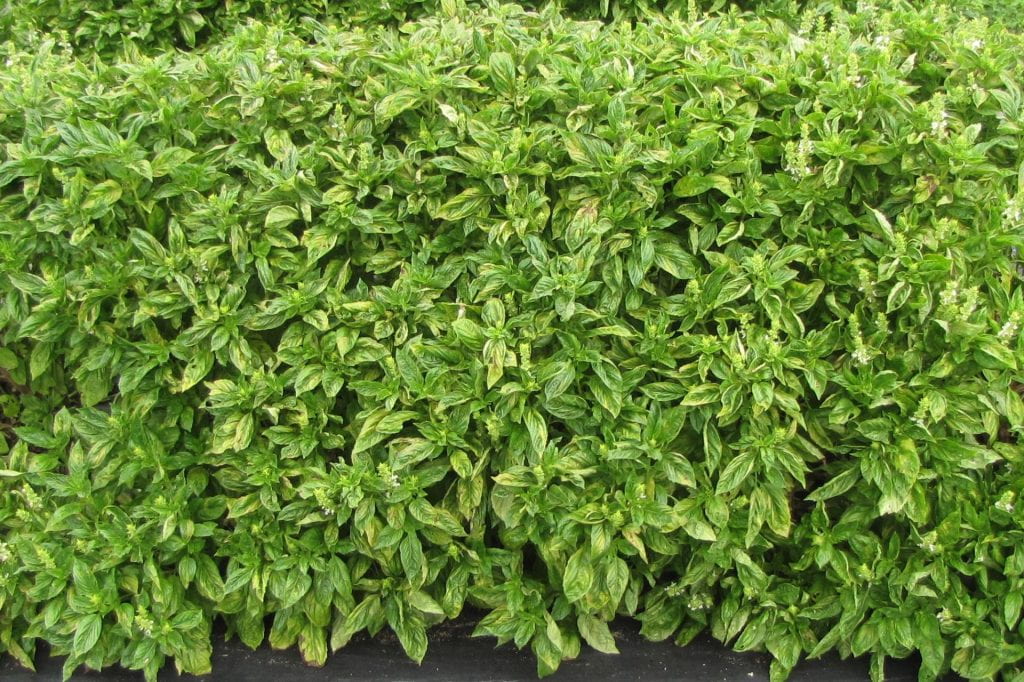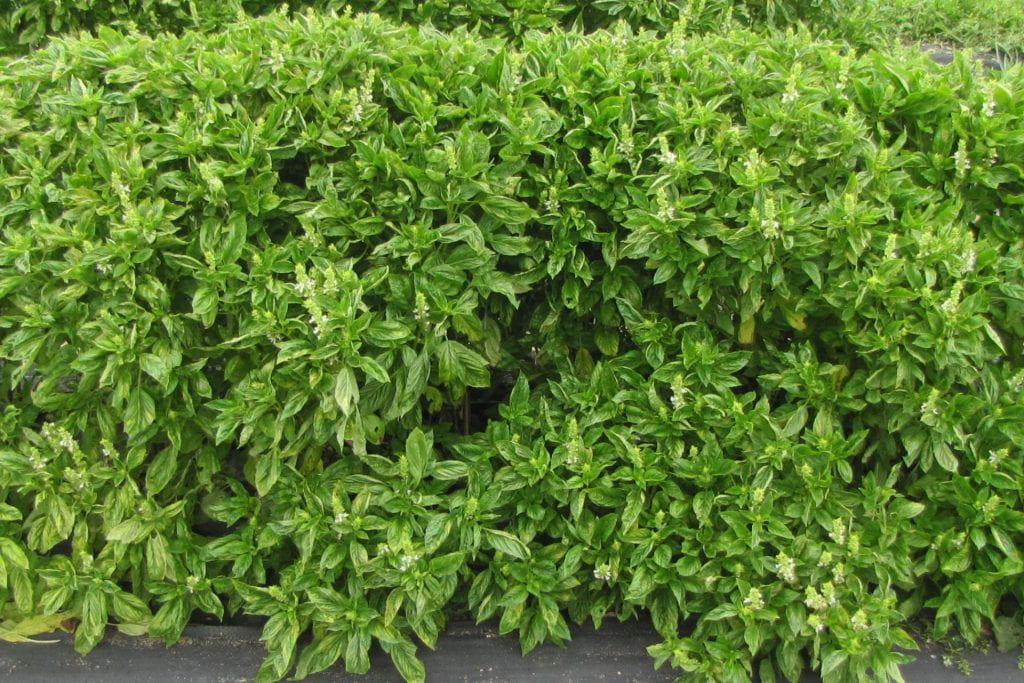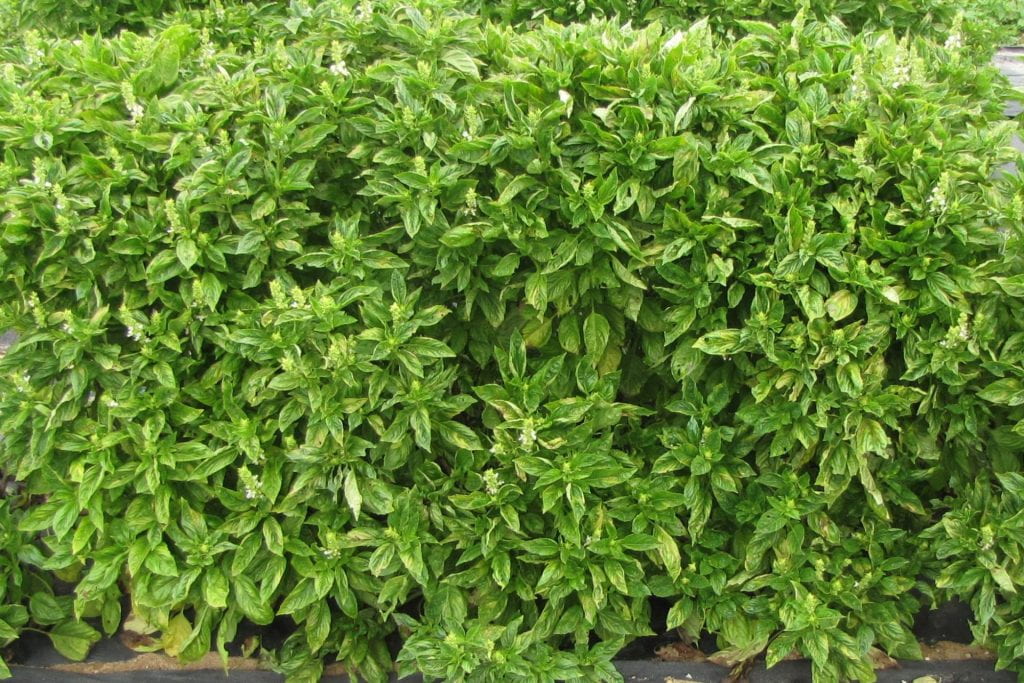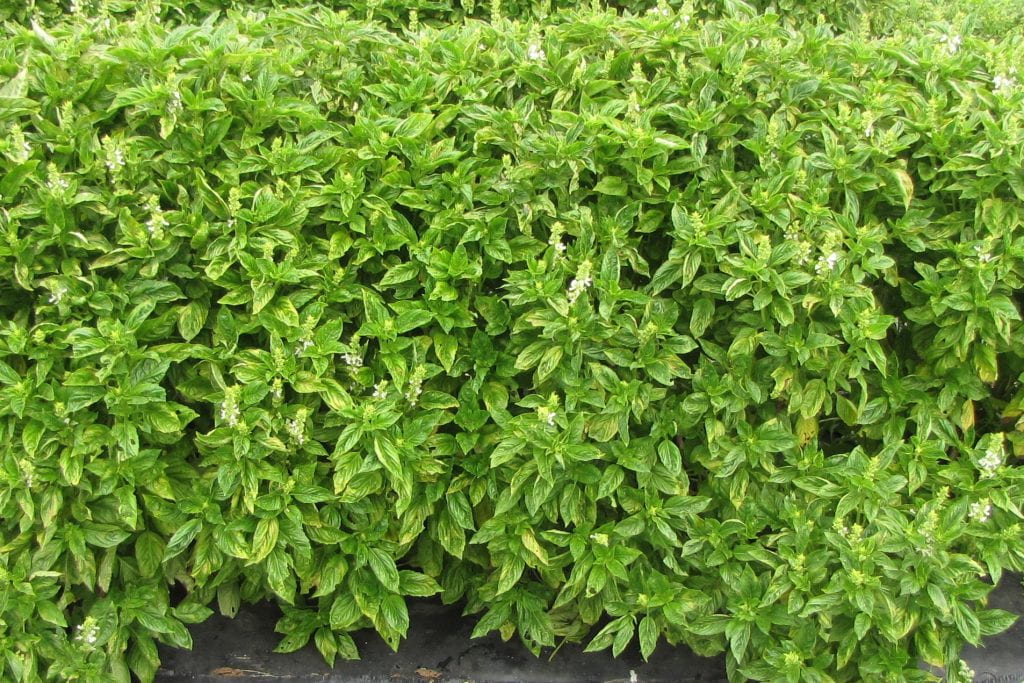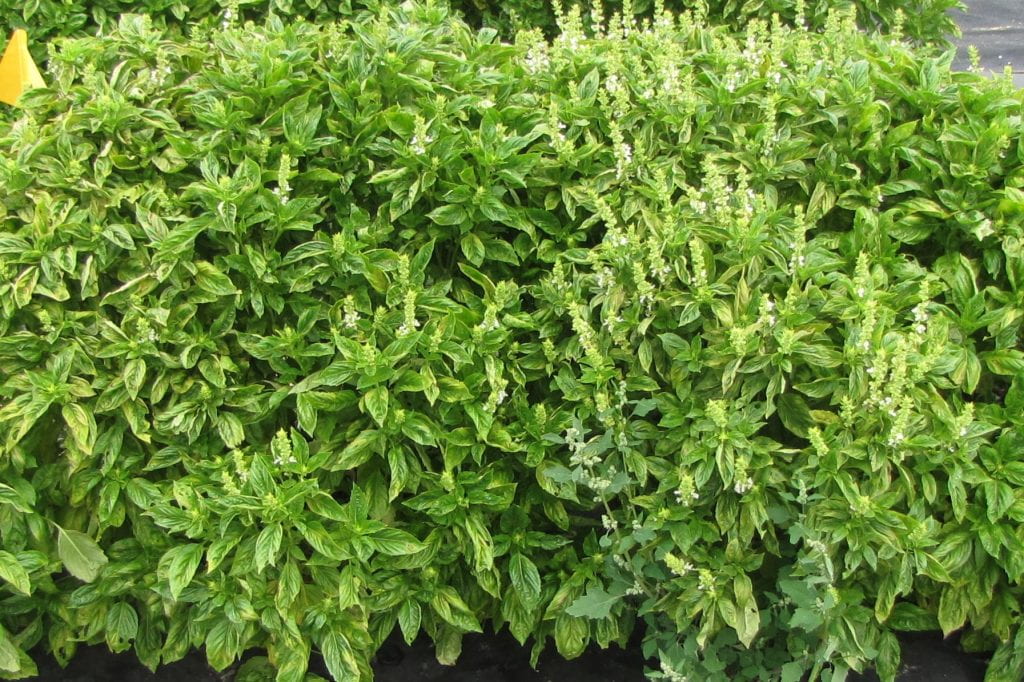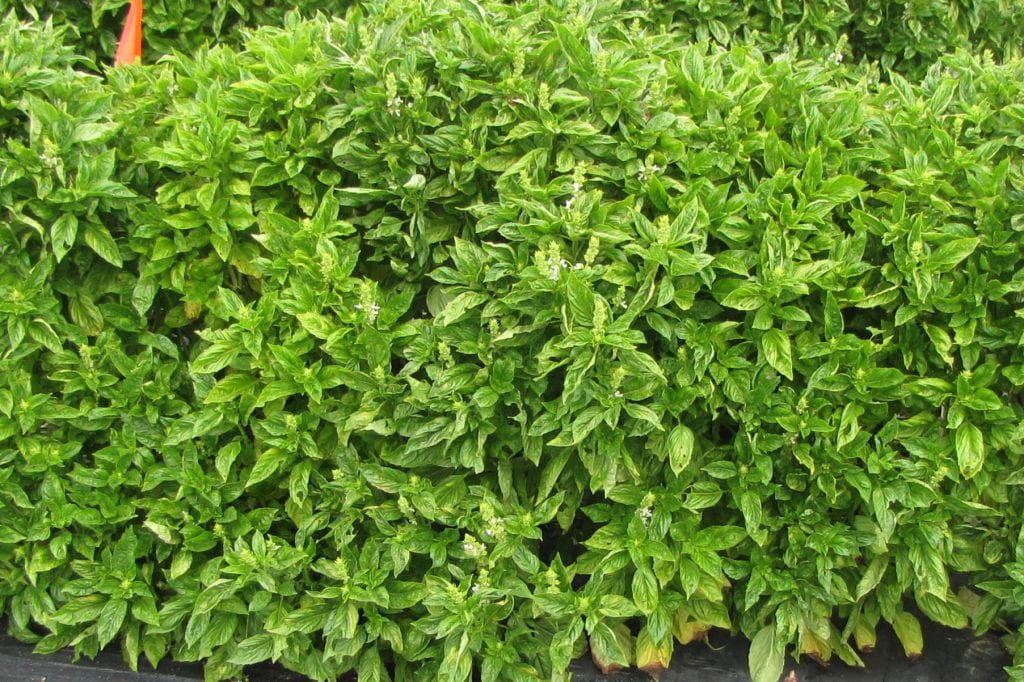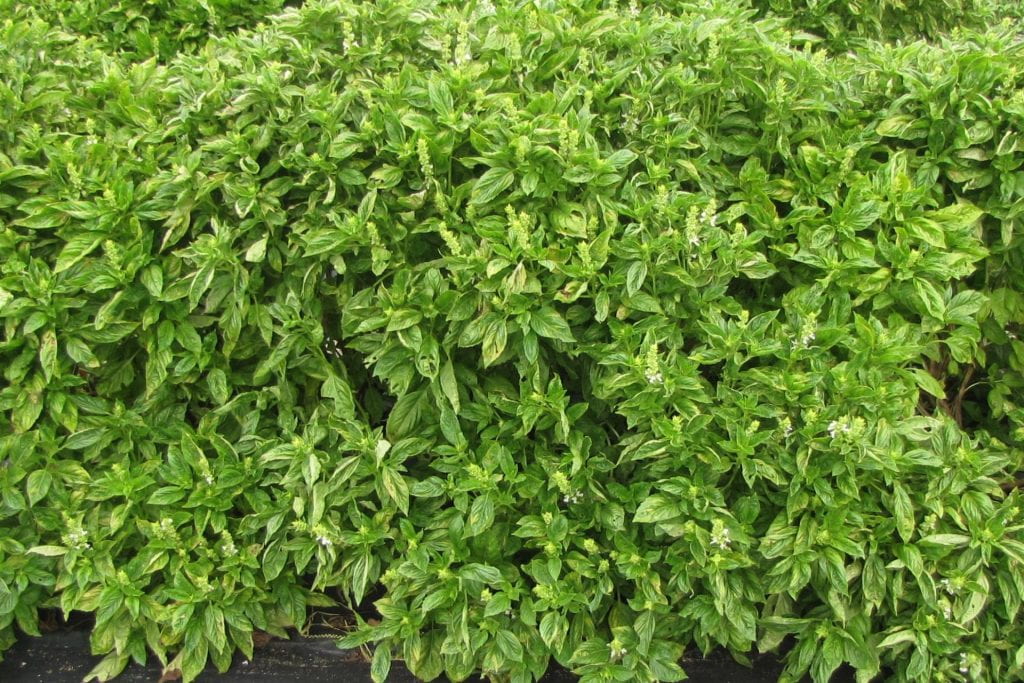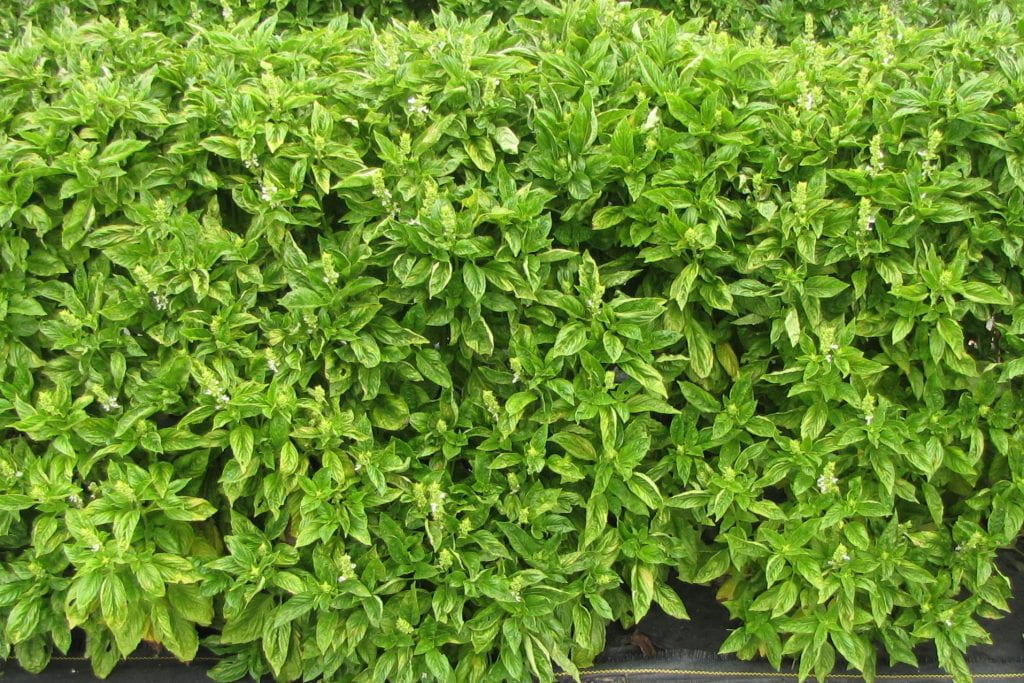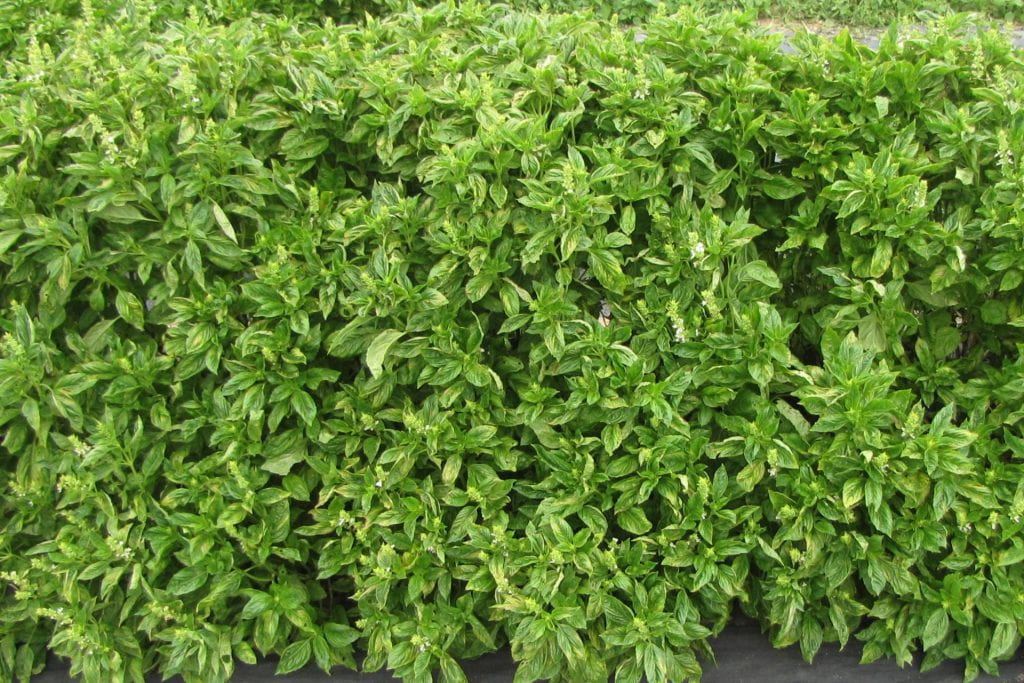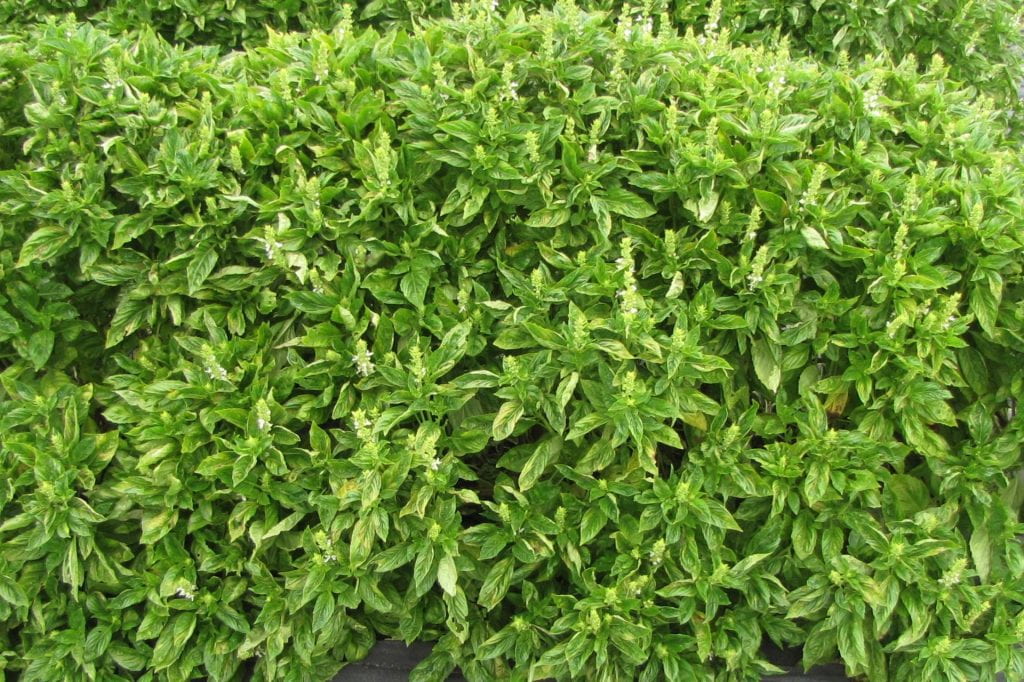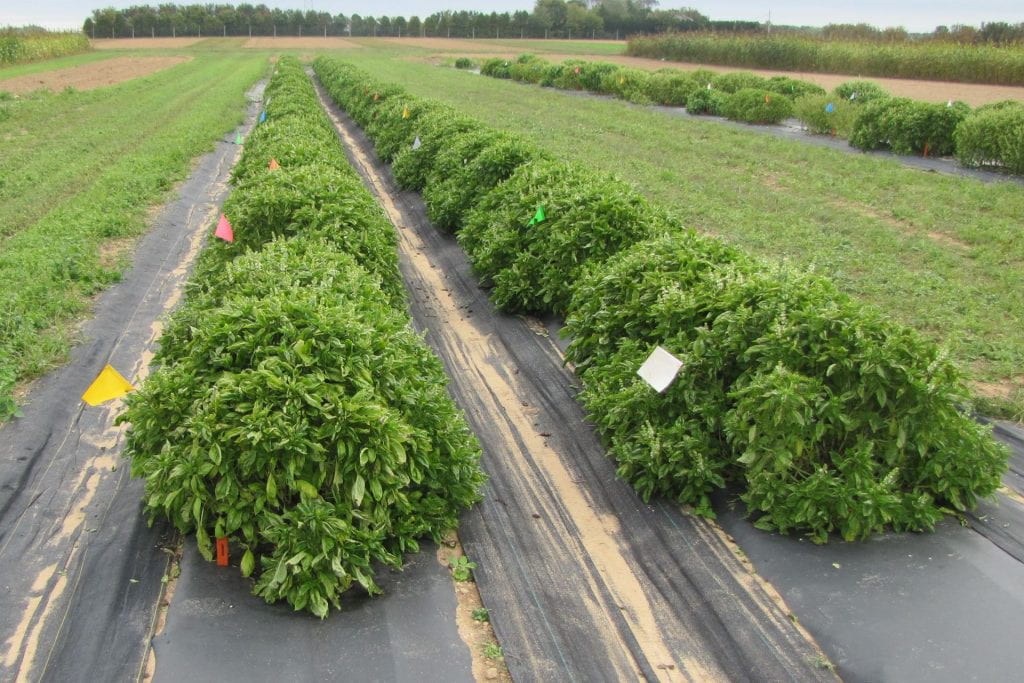Below are photographs of a field experiment conducted to determine efficacy of treatments with biopesticides for downy mildew of basil in a replicated field experiment at the Long Island Horticultural Research and Extension Center in Riverhead, NY. A sweet basil variety bred to be resistant to downy mildew, Rutgers Passion DMR, was used because organic products tested previously were ineffective when applied to susceptible and partially resistant varieties.
LifeGard and Stargus are biopesticides acceptable for organic production (OMRI-listed). K-Phite is a conventional (synthetic) biopesticide. All three biopesticides induce host plant resistance. Actigard, a conventional plant activator, was included for comparison. All were tested tank-mixed with either Cueva (copper octanoate) or Kocide 3000-O (copper hydroxide); both are OMRI-listed. An alternation program with four organic fungicides was also evaluated. Applications were made on a weekly, preventive schedule starting on 28 July. Symptoms were first seen on 31 August.
See report for information about methods and results plus data table.
Figure 1. Overview of field experiment, taken on 29 September. Basil was transplanted on 14 July.
Figure 2. Plants in the field on 29 September, one week after the last application for the treatments.
